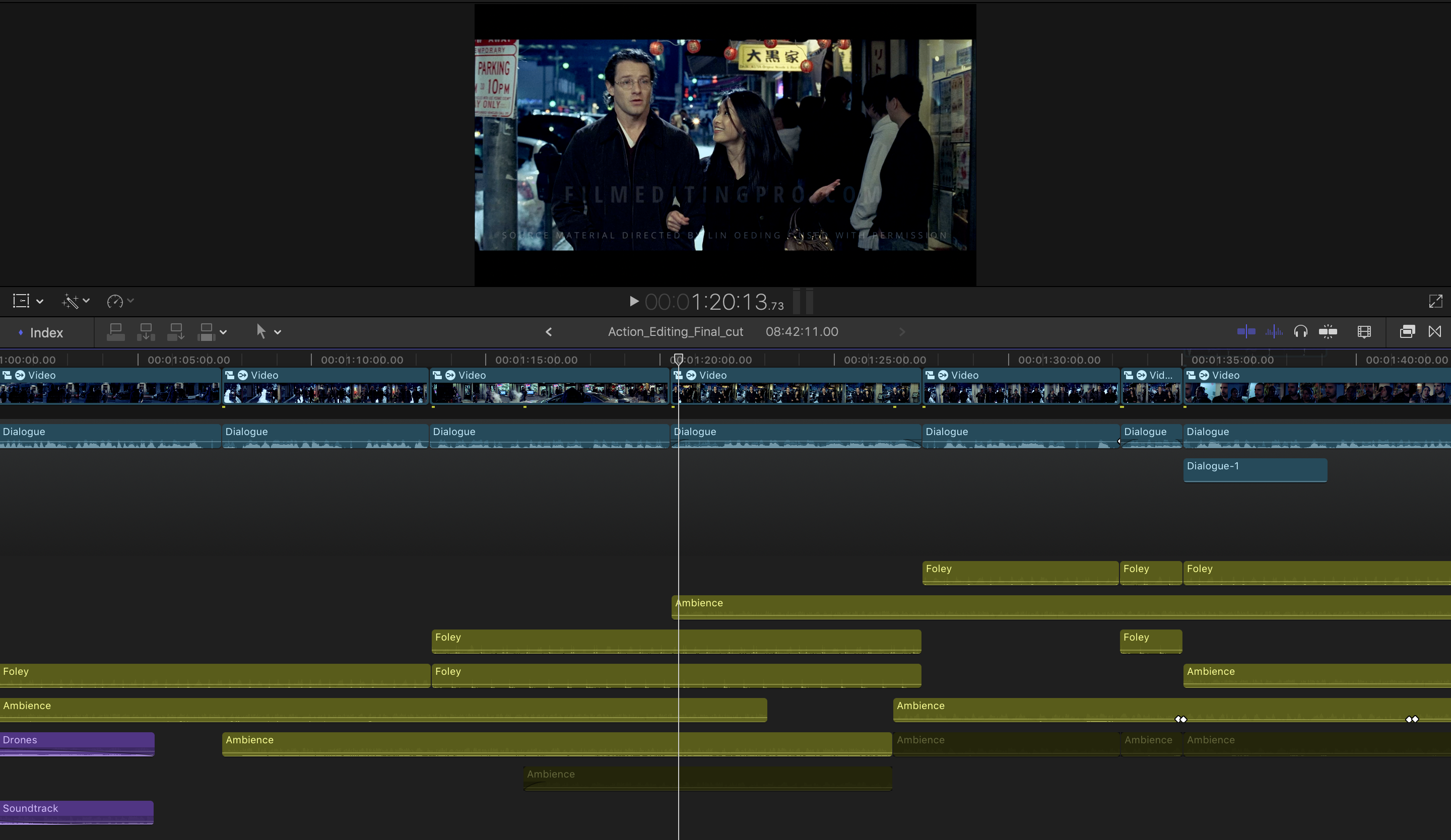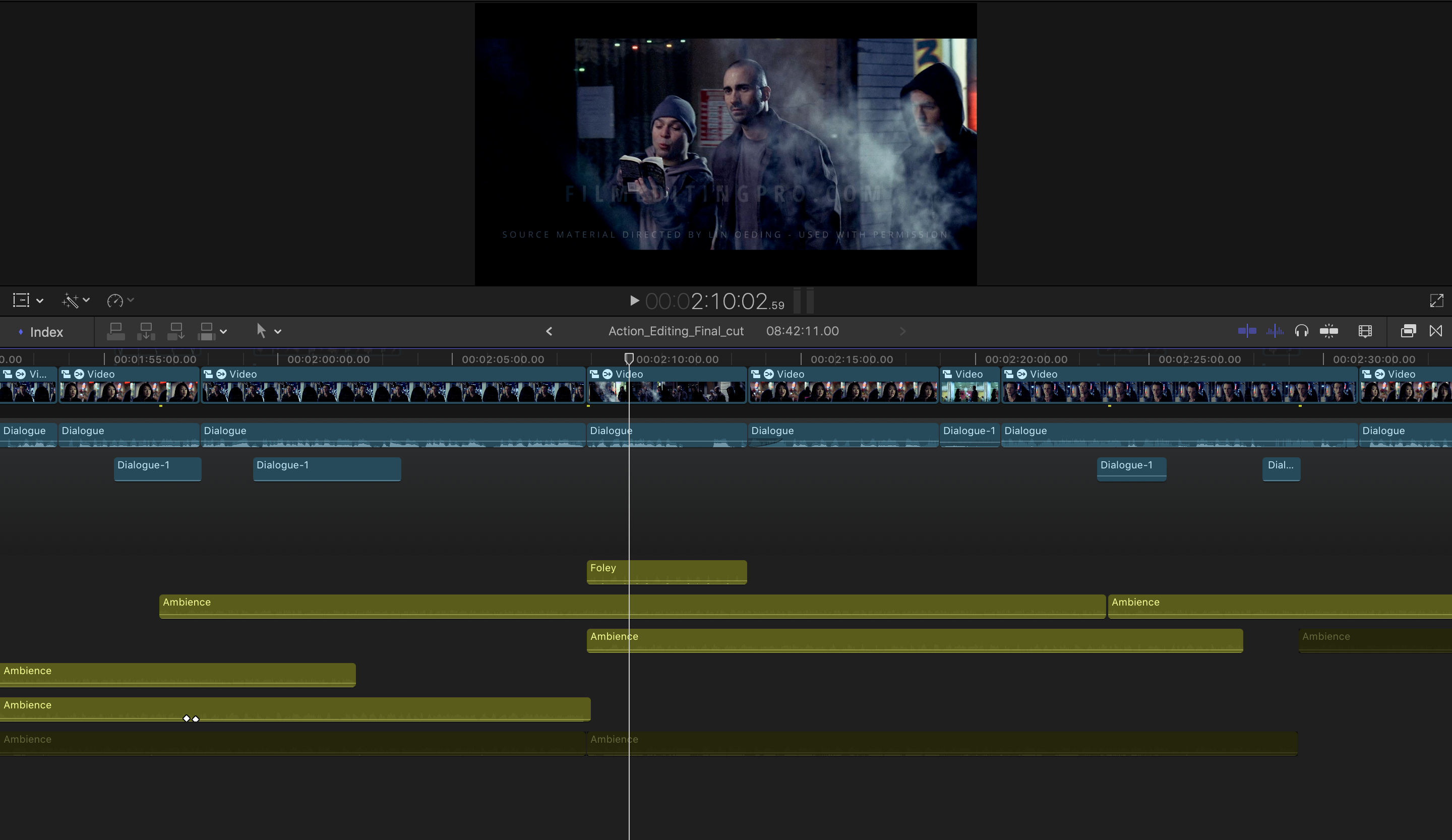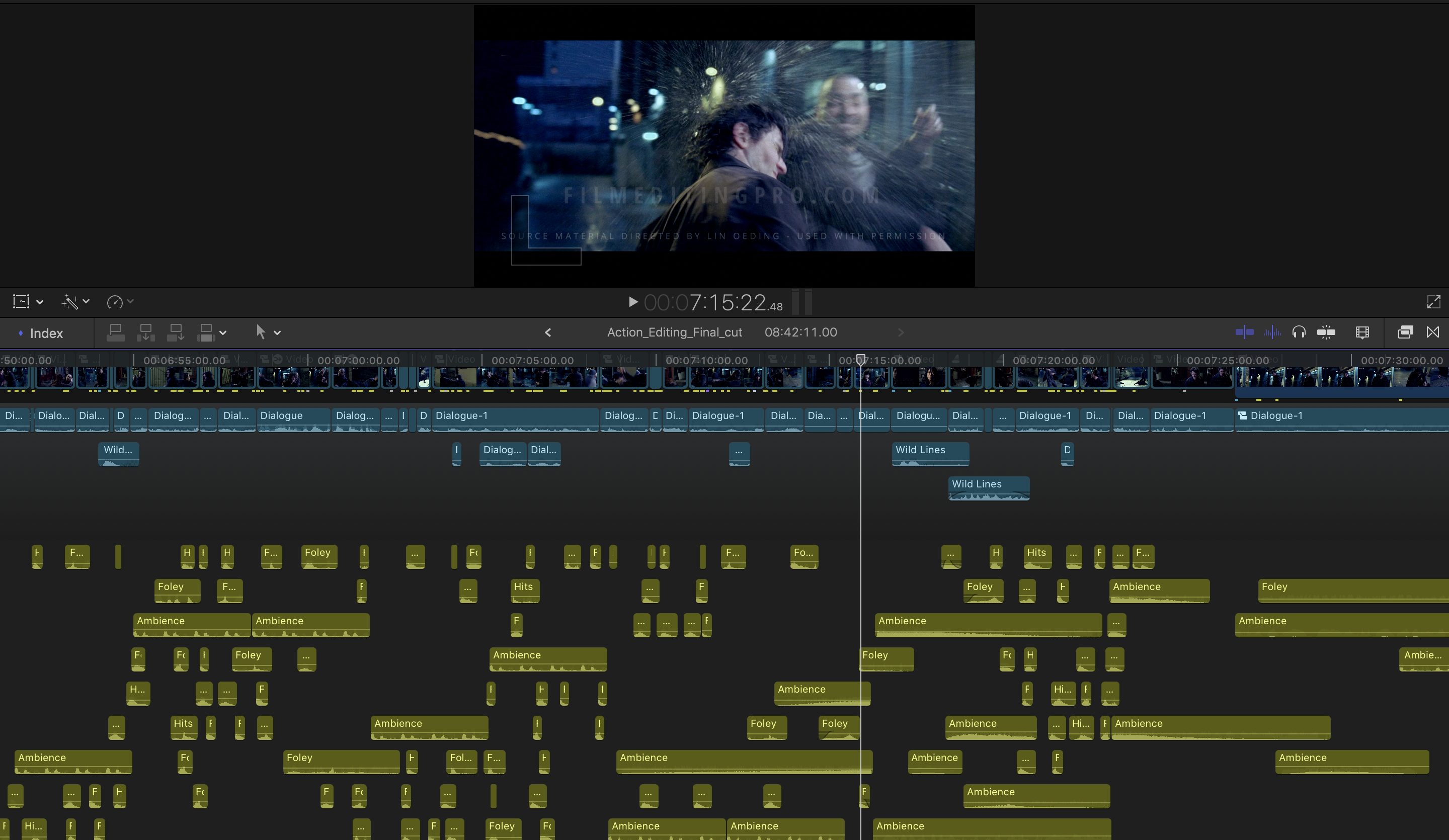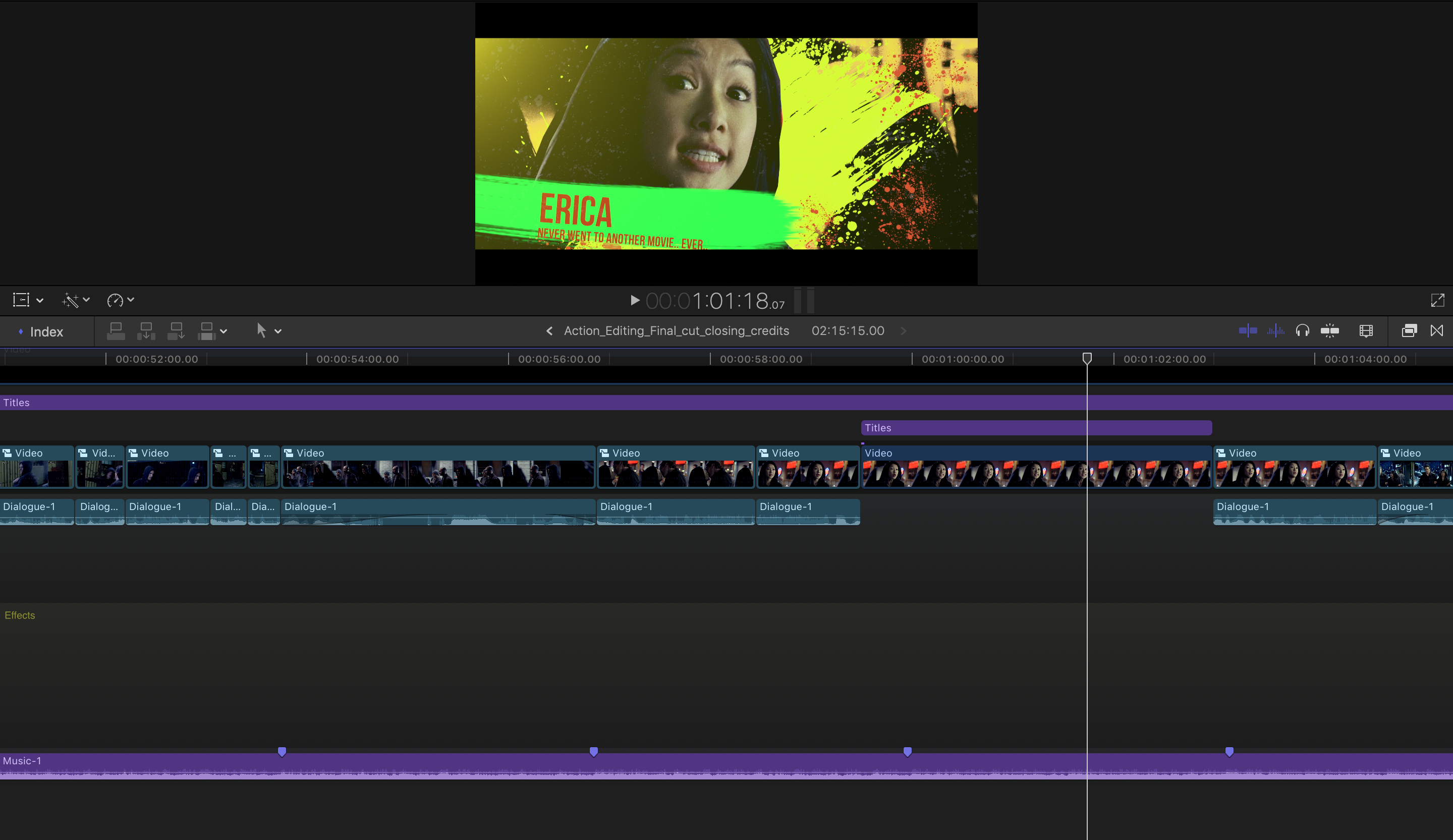Today we'd like you to meet Greg Koorhan, a recent graduate of our training course,…

The Art of Action Editing Student Interview: Levy Bergman
Today we’re excited for you to meet Levy Bergman, a recent graduate of our training course, The Art of Action Editing.
He submitted his cut to our team of editors and we were extremely impressed by his unique vision. We hope you’ll be inspired!
Let’s get started by taking a look at Levy’s cut. Hit play and be sure to watch until the end for a cool surprise!
Final Edited Scene by Levy Bergman
Pretty awesome. Ok, now let’s get to know Levy and dive into some of the details of his cut.
 Meet the Editor
Meet the Editor
FEP: Can you tell us a bit about yourself? Where are you from? What do you do for a living? What got you into editing?
LB: I’m currently living in Brooklyn, NY but originally from Budapest, Hungary. Believe it or not, at this moment I work in a supermarket at night and edit in the morning (with very limited sleeping time).
I started editing in a different era, at the transition of analog and digital. In those days we were just trying out the possibilities of digital editing. It took many long hours, even overnight to render a Betamax tape to Final Cut even to begin the edit process – and we had extremely limited options for sound design.
I’ve got a classic education in film making, which is based more on storytelling, drama building, dramaturge fundamentals. I’ve also studied photography of film, lighting, frames, and colors – you name it. I’m thankful that my father played guitar at home, because music was always around and it had a big impact on my work. Musicality, understanding music, beats and having a sense for rhythm I think are necessary for an editor in any era, any age.
Musicality, understanding music, beats and having a sense for rhythm I think are necessary for an editor in any era, any age.
I was lucky to get into productions at a young age to gain experience. After a while I spent more time in the distribution office and edit rooms, starting with trailer editing. I was amazed by the power of it. A simple and humble way of storytelling that includes the writer, director, producer and audience role all at once. I literally felt in love with it and edited trailers, music videos and promos every time I had a chance. My best period was working on The Pianist by Roman Polanski, working with then-Miramax on Kill Bill 1&2 and The Passion of the Christ by Mel Gibson.
FEP: What inspired you to enroll in The Art of Action Editing? How did you like it? What did you learn?
LB: I enrolled in your action course for the same reason I enrolled in ALL of your courses, because I find it to be the most detailed, sophisticated education on editing that you can’t find anywhere else. The Art of Action Editing is such a complex course that gives you a wide range of knowledge or at least understanding, of how to build up an action scene.
My favorite parts are always about sound – probably because of my strong musicality and because I still keep learning about it (what will be a never ending story I guess). How to build up a scene’s sound starting with the music bed, ambiance, foley and all the effects. And once again: rhythm and timing is everything in editing for sure. I really liked the detailed lessons about the structure of an action scene, explaining the production methods, then getting into the editing room and working with the raw material. That’s what I call “creating the movie magic”.
I kept referring back to your other courses because I find it’s the most effective way to combine all the knowledge you give. Everything’s connected. Secrets of Creative Editing was a perfect help when building a dialogue scene and I’ve found that The Art of Trailer Editing is also helpful for any action scene, romantic scene, comedy or horror.
As long as you have a strong knowledge base for storytelling, you can adapt Film Editing Pro lessons to your work anytime.

FEP: How did you approach the cut? Did you follow The Art of Action Editing outline/process or use your own method?
LB: Since I enrolled in The Art Of Action Editing Pro version, I knew from the beginning that I wanted to work on the full story, not just the fight scene. I literally learned and worked every day for months – completed all the lessons, used all the knowledge, methods, and followed the outline.
I’m very grateful for the opportunity to get this knowledge base because I know I will remind myself of it and repeat every lessons every day. Since I downloaded all the raw footage [in the Pro version] I stepped into the writer and director role and built up the whole story line myself using the fight scene as the major, surprising event.
FEP: What did you find the most fun/interesting about the cutting process?
LB: I think the most fun and interesting part of this project and all of the other editing I’ve done and currently do – is working with the raw materials. Learning about the characters before the word ACTION and after the word CUT. Characters through the actors live before and after. A good editor can use all of their moments to build up the story.
For example, my favorite character was Mouth and the actor Jeremy Luke had some great moments before and after the takes. All of these moments gave me the inspiration to build up my idea for the end credit.

FEP: Did you run into any difficulties overall? Was there anything specifically challenging about editing the fight sequence itself – and if so, how did you solve those problems?
LB: Editing the fight scene was pretty straight forward, thanks to the amazing lessons in The Art Of Action Editing. I didn’t have any issues with the visuals but spent many, many hours with sound since I wanted to use my own music bed and match it to the surrounding music cues.
Sound is the majority of work for every movie and takes a lot of time to master. I’m very much looking forward to your next course about music editing :)

FEP: The first thing you notice during the opening sequence is how you’ve played around with time. Because we haven’t seen another editor take that approach yet, can you tell us a little bit about how you came to that idea?
LB: Thank you for the compliment! I think the idea started because of my love for Christopher Nolan and Guy Ritchie films – and my overall love for non-linear storytelling. I also read novels from authors who are masters of non-linear storytelling which gives me lots of ideas for upcoming edits.

FEP: Another unique element was the use of music with lyrics. It added variety and blended well with the instrumental cues. Was that a conscious choice you were aiming for at the start or did you feel the cut was simply “missing something” at any point?
LB: Thank you for noticing the music and the work behind it! I have a strong musical background and am also sensitive to sound, that’s why I had a very strong idea from the beginning. I consciously chose these cues because I found them very expressive for the short movie’s atmosphere. I listen to a wide range of music every day and built my own library in many many gigabytes, then tagged all of them by mood and atmosphere.

FEP: One of the coolest things about your cut was the end credits. It added a completely new story element and a little humor. What inspired you to do that? Did you create the GFX yourself?
Thanks for your compliment! The idea for the end credits came from my drama and storytelling studies – there must be absolution – let the viewers breathe after a dark event. You just can’t beat up a viewer for minutes or hours and let them lose all their hope. Give them humor, give them a digestible ending that will bring them back to remember your work.
I created the effects mostly by myself, or with what I learned from the internet and modified to my taste. I’m not a graphic artist and I can promise I will never take anyone else’s job in it – however I found it useful this time for the purpose of the end credits. The edited music cue gave me a limited time to give the viewers entertainment mixed with humor and make them feel less depressed after the fight scene.

FEP: Is there anything else you’d like to mention about your editing process? Any tips or suggestions for other editors?
LB: If there is anything I would underline, it’s that every editor must be a professional in storytelling. I can’t say that enough. There are fancy effects, many sound design elements, popular YouTube tutorials – but these are still tutorials, nothing more. Story is everything. Without story there’s no cinema, there’s no film making. In my view, a constant problem in the movie business is having to find new stories, books and writers. An editor must be a master of storytelling in both visual and sound. So keep learning. Always.
An editor must be a master of storytelling in both visual and sound. So keep learning. Always.
FEP: We appreciate you taking the time to talk with us, Levy! Do you have a website or contact method you’d like to leave for people who want to get in touch with you for work or otherwise?
LB: Feel free to check out my site http://www.levybergman.art and get in contact with me anytime through there!
*Update – Levy Just Landed His Dream Job!*
We were pleased to get the following message from Levy regarding his recent career change:
“After successfully finishing your amazing Art of Action Editing course in April, something happened. I received an email from a production company asking me if I could start to work with them.
I’ve had an amazing month as an in-house editor in Manhattan, NY and I’m the happiest I’ve been for a long time. I was definitely able to use all the knowledge I learned during your courses for Trailer, Creative and Action Editing!
I now work on trailers, teasers, featurettes and social media posts for films. Living my dream :) You have all my gratitude and wanted to say thank you again for your kind support, for your amazing work and all your help!”
Wrap Up
Thanks so much for joining us today! I hope you enjoyed this interview with recent Film Editing Pro graduate (of our Secrets, Trailer AND Action courses!), Levy Bergman.
We love hearing student success stories and really appreciate him taking the time to share his great news with us. We’d love to know how our training has helped you succeed – whether it’s a new job offer like Levy’s or simply improving your personal projects. Tell us in the comments below!
If you’re interested in learning more about our professional video editing courses, sign up below to receive our 50 Editing Tips and be added to our newsletter.
Leave Your Thoughts & Comments Below:


